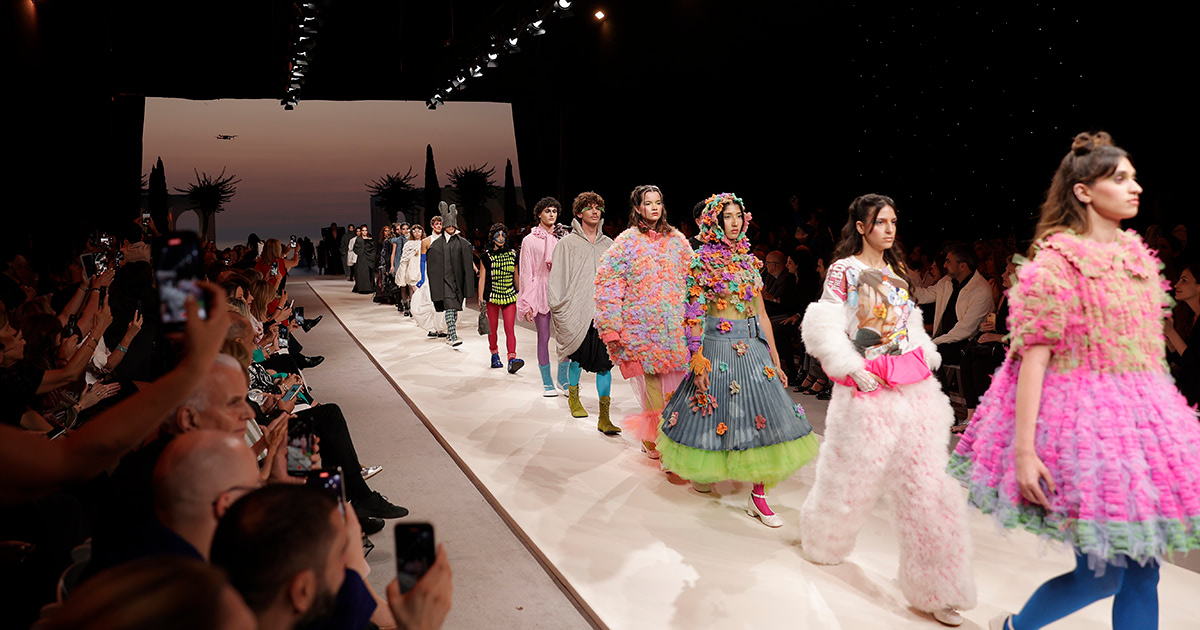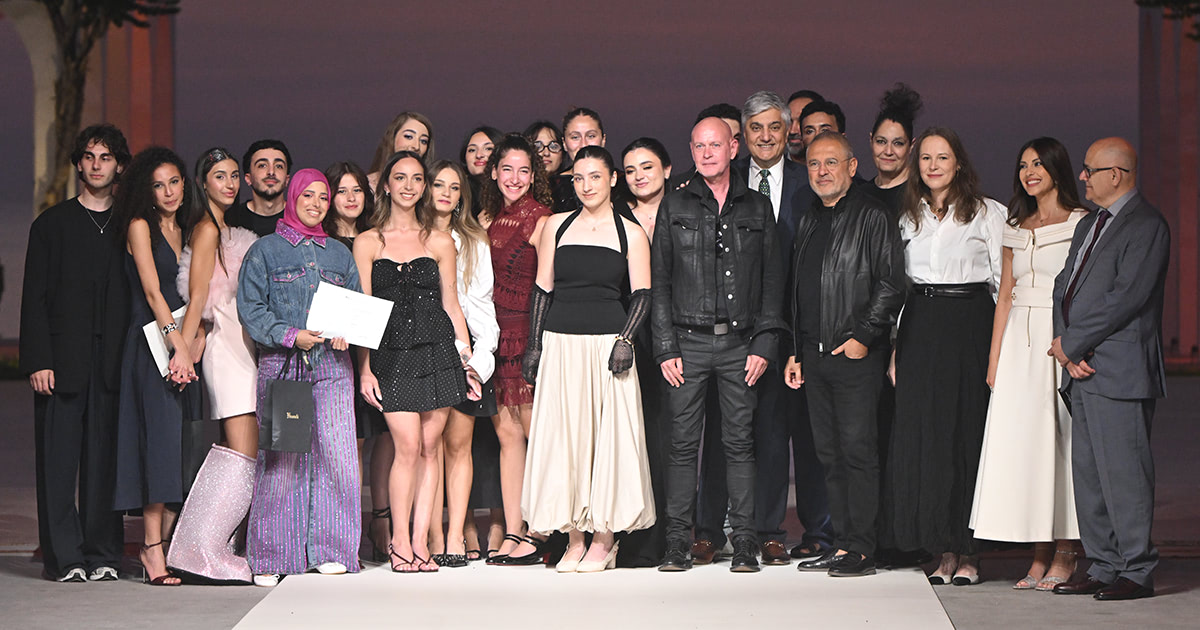New Generation of LAU Designers Promote Identity and Change
Amid Lebanon’s challenges, the School of Architecture and Design graduated designers who turned their personal struggles into fashion statements.
Framed against the sweeping backdrop of the Mediterranean, LAU’s annual fashion show, held by the School of Architecture and Design (SArD) on June 4, 2025, hit the runway this year with a flair of resilience at OCiel Venue, Nahr El Kalb. Themed Panorama, the show featured a generation of designers that had come of age in times of instability.
“This group of students has struggled against all odds to materialize their dreams and fulfill their aspirations,” said School Dean Elie Haddad in his welcoming speech. Reflecting on the devastating circumstances they had to endure, from an abiding economic crisis to the recent war in Lebanon, he added, “We cannot but be impressed by their perseverance and dedication.”
Dean Haddad acknowledged the collective efforts of the faculty and staff in providing the students with a world-class education. He also expressed gratitude to visiting critic Jurgi Persoons, and to Jalal Moghrabi, who oversaw the work of the graduating class; to Elie Baroud, for his art direction of the show; and, last but not least, to the program director Silia Abou Arbid, for elevating the program to a new level of excellence.
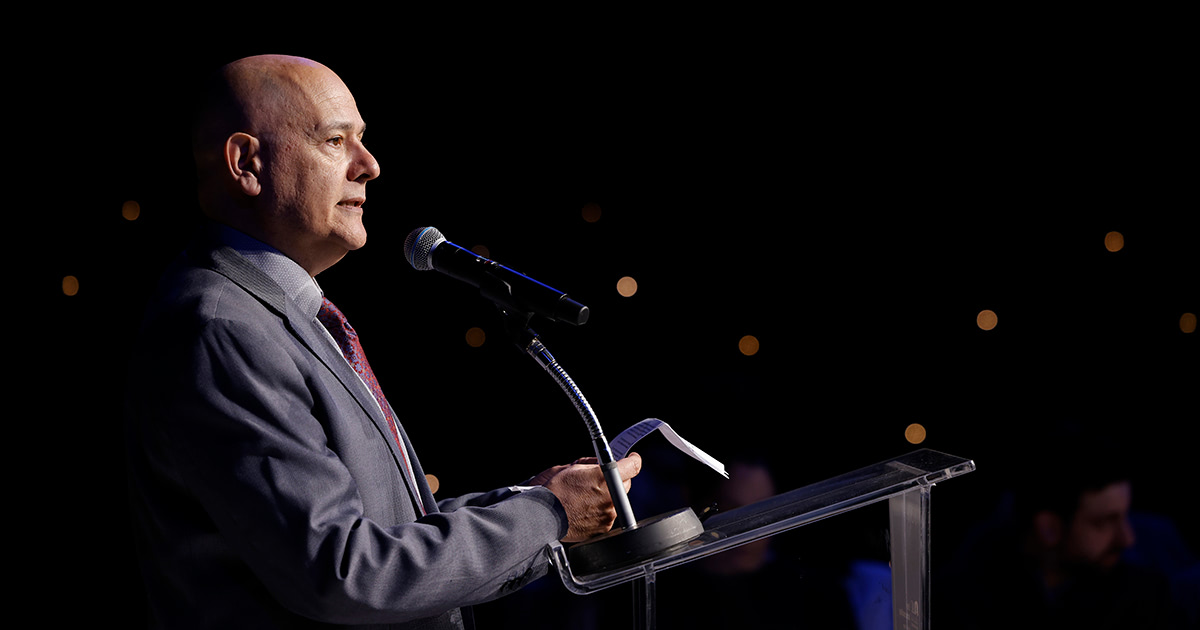
Demonstrating adaptability to Lebanon’s crises, the ninth graduating cohort of LAU’s Fashion Design program—the second largest since the program’s inception—explored the notion of survival to inform their design collections.
Some collections challenged social norms, such as reinterpreting girlhood, redefining modesty, and reimagining masculinity, while others drew from personal and historical archives to explore memory, loss and belonging. Still others experimented with the intersection of fashion and technology, blending human and machine elements to reflect a world increasingly shaped by artificial intelligence and hybrid identities.

Showcasing the works of 15 students, the event was attended by LAU President Chaouki T. Abdallah, world-renowned designer and Honorary Chair of the Fashion Design Program Elie Saab, CEO of the Saab Enterprise Elie Saab Jr., ambassadors, representatives of foreign embassies, vice presidents, faculty, staff, students, parents and fashion enthusiasts. Fashion stylist and lifestyle blogger Rita Lamah Hankach emceed the event.
Addressing the graduates, Dr. Abdallah commended them for their efforts, remarking that they “have done more than complete a program, but rather dared to dream, to create, and to provoke.”
This year’s theme speaks to “multiplicity, openness and the beauty found in nuance… exploring the tension between fragility and determination, nostalgia and modernity, and detachment and presence,” he said.

At the heart of this collective dialogue, added Dr. Abdallah, lies the involvement of the program’s faculty, the leadership of its program director, and above all, the continuous support and inspiration of Mr. Saab.
According to both Dr. Abdallah and Dr. Haddad, the program has grown over the past 12 years into a national and regional leader in shaping the next generation of fashion designers. In a shared sentiment, they reflected on its evolution from a mere vision to a reality that cultivates creativity, risk-taking and a global outlook.
The program’s expansion was evident this year in its emphasis on sustainability and digital innovation. Incorporating artificial intelligence into the design process, the students experimented with AI-generated concepts before translating them into physical garments.
“With the introduction of dedicated AI courses,” said Dr. Haddad, “we are maintaining a state-of-the-art program that helps equip our graduates with the necessary tools to shape the fashion industry of tomorrow.”
Elie Saab Jr. commented on how this approach is “just the beginning,” noting the program’s strength and the shared vision that brought this partnership to life. “As we look ahead, we’re committed to growing this program and offering stronger learning, global exposure and real career opportunities to help you turn your talent into lasting impact,” he said.
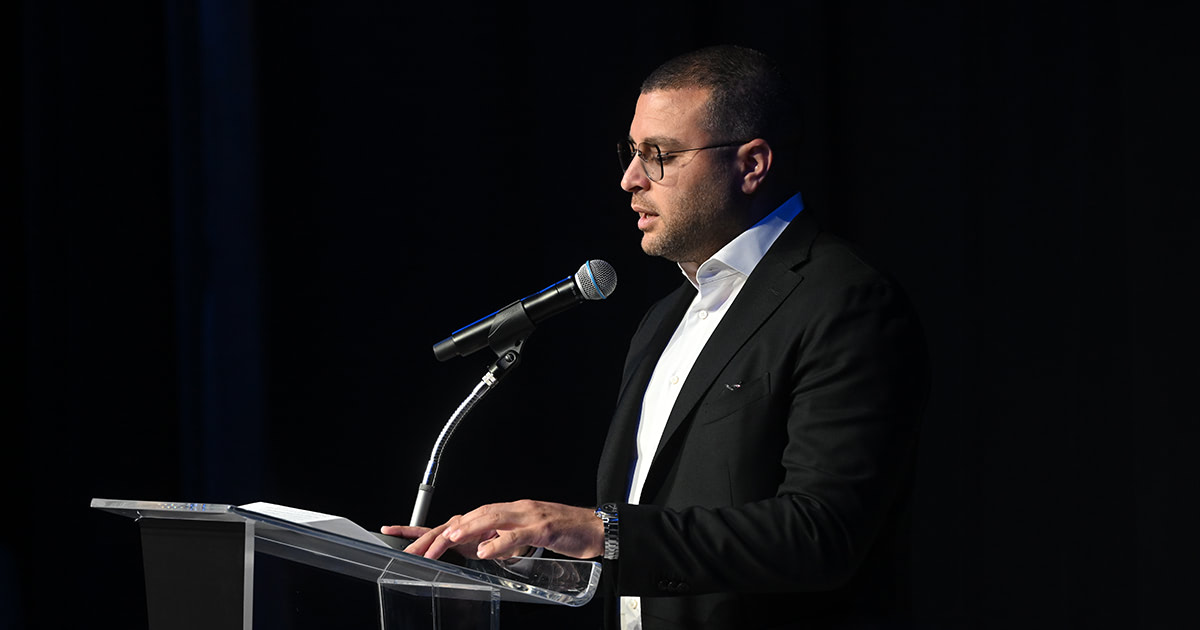
Following the runway presentation, four students were honored for their work, with prizes awarded courtesy of event sponsors Nsouli Jewelry and Wissam Sargi Beauty Lounge and Clinics.
With a new distinction introduced this year on the recommendation of Elie Saab, the Coup de Coeur award served as a personal tribute to a graduate whose work resonated for originality, boldness and emotional depth. It was awarded to Shaymaa Aldinnawie for her collection, Technicolor, which blends modest hijab fashion with bold K-pop aesthetics, showing that modesty transcends limitations and can convey a vibrant, playful expression of identity.
“I love the extravagance of K-pop and the confidence it radiates, but I never saw myself reflected in that world,” Aldinnawie said. “Technicolor is my way of saying we proudly belong here, too, in our own terms.”
Sirine Kobeissi received the Excellence in Craftsmanship Award for her collection, GIRLE, which defines girlhood as an ever-shifting identity shaped by societal expectations and digital culture.
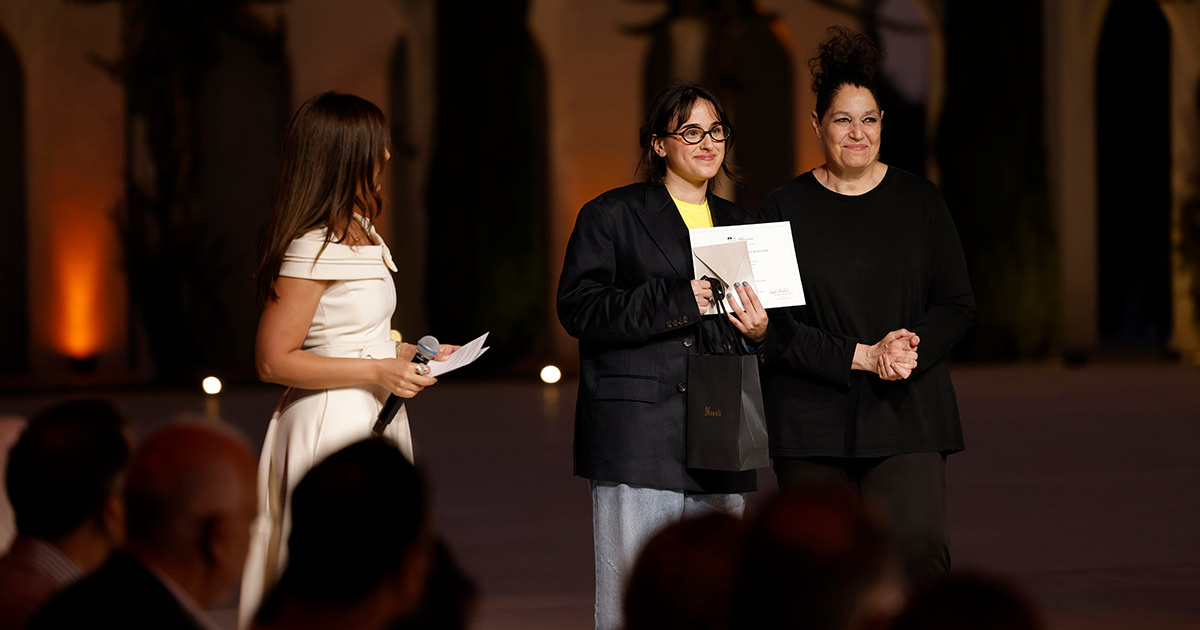
“To me, this collection is about reclaiming girlhood as something fluid, not just the pink version we’re taught to aspire to,” said Kobeissi. “It reflects the messiness of growing up, trying on identities, and growing into your own skin while in a constant struggle with external expectations.”
Hady Saleh earned the Excellence in Concept Development Award for his collection, 62, which reimagines traditional masculinity by softening iconic male figures, such as soldiers, athletes and comrades, to question desire and rewrite what it means to be a man.

“I found myself asking questions about what happens when we strip away the armor and harshness of almost all heroic, predominantly male, historical figures,” Hady said. “What if strength was tenderness, and even desire? I believe masculinity doesn’t have to look just one way.”
The coveted Prix du Jury Award went to Nour Ezzedine for her collection, Azimuth, which explores garments becoming emotional anchors during forced displacement by transforming domestic objects into wearable memories that help carry lost spaces and navigate back to a sense of belonging.

“When you’re forced to leave home, you can’t pack everything that holds meaning,” said Ezzedine. “With Azimuth, I wanted to hold onto that. It’s my way of saying that even if everything around you changes, you can still carry home with you.”
